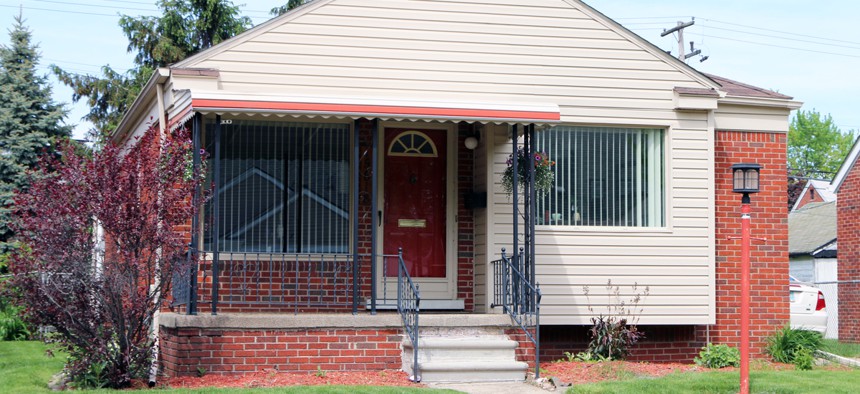Minimum Wage Still Can’t Pay For A Two-Bedroom Apartment Anywhere

A two bedroom home in Michigan. James R. Martin/Shutterstock
The 30th anniversary edition of the National Low Income Housing Coalition report, “Out of Reach,” shows that housing affordability is getting worse, not better.
Headlines about the U.S. housing crisis tend to focus on the extremes: the median price for a one-bedroom apartment in San Francisco is now $3,700. In New York City, it’s nearly $3,000.
But the problem isn’t just in the Bay Area or Manhattan: As rent peaks in superstar cities grow, housing affordability gaps in the rest of the country have widened, too. Today, there is not one U.S. state, metropolitan area, or county in which a minimum wage worker who clocks 40 hours a week can afford a two-bedroom apartment. And only in 28 of the country’s counties can a 40-hour-a-week minimum wage worker afford a one-bedroom.

Those sobering statistics come from the 30th anniversary edition of the National Low Income Housing Coalition’s “Out of Reach” report on housing affordability across the country. A lot has changed since the first report came out in 1989: 2.5 million low-rent housing units were lost from the private market, zoning restrictions have tightened in some places, and inequality has widened. Communities protest the construction of affordable housing projects, and the Trump administration threatens to expel immigrants from publicly funded developments. Pay for low-wage work has risen, but only modestly.
In 2019, the affordability crisis has plunged to new depths. Last year, the average worker making the federal wage minimum of $7.25 per hour had to work 122 hours a week, every single week, to afford an average two-bedroom apartment. Now, they have to work nearly 127—an almost-impossible feat that would require working about three full-time jobs.
To afford a one-bedroom at national average fair market rate, it would take federal minimum wage workers 103 hours a week. The map below shows where in the country it’s necessary to work more than double the standard workweek to afford a one-bedroom apartment:

As part of its report, NHLIC also calculated a national “housing wage,” defined as the approximate hourly rate any worker would have to make in order to afford a two or one-bedroom apartment at fair market rent. (Fair market rents are based on the Department of Housing and Urban Development’s definition for each state, which don’t account for fluctuations between cities; housing is only deemed affordable if renters can pay for it without spending more than 30 percent of their income.)
As my colleague Tanvi Misra pointed out last year, affordability isn’t just a problem for the nation’s poorest, or even only for the workers making minimum wage. For a two-bedroom rental, the Housing Wage is $22.96—a figure that’s higher than average renters’ wages everywhere, and at least $5.00 higher than the average wage for renters in 16 states. For a one-bedroom rental, the Housing Wage is $18.65.
It’s worth noting that while 42 states and cities have minimum wages higher than the federal minimum of $7.25, not even the highest of $12 in Massachusetts, California, and Washington state, is enough. The $15 minimum wage increases won by workers in cities like San Francisco and Washington D.C., and that are the goal of the nationwide Fight for $15 campaign won’t be enough, either.

These averages mask geographic disparities, which cut across familiar lines. In California, a full-time worker needs to earn $34.69 an hour to afford a two-bedroom apartment, for example; in Alabama, only $14.92.

Renters aren’t blind to their plight, and neither, increasingly, are politicians. Though this report focuses on states, cities like Minneapolis and Seattle are attempting to make their neighborhoods denser, eliminating single-family zoned plots that keep out more affordable (or just more) developments, while other cities cling to those same zoning laws harder than ever. And this nationwide reality is making housing—and housing affordability—a key political issue in the lead-up to the 2020 presidential election.
For those who want to see where their state falls, the report also includes an interactive map. The bottom line: for minimum wage renters everywhere, nowhere is affordable.
Sarah Holder is a staff writer at Citylab.
NEXT STORY: What to look for in a managed detection and response solution





